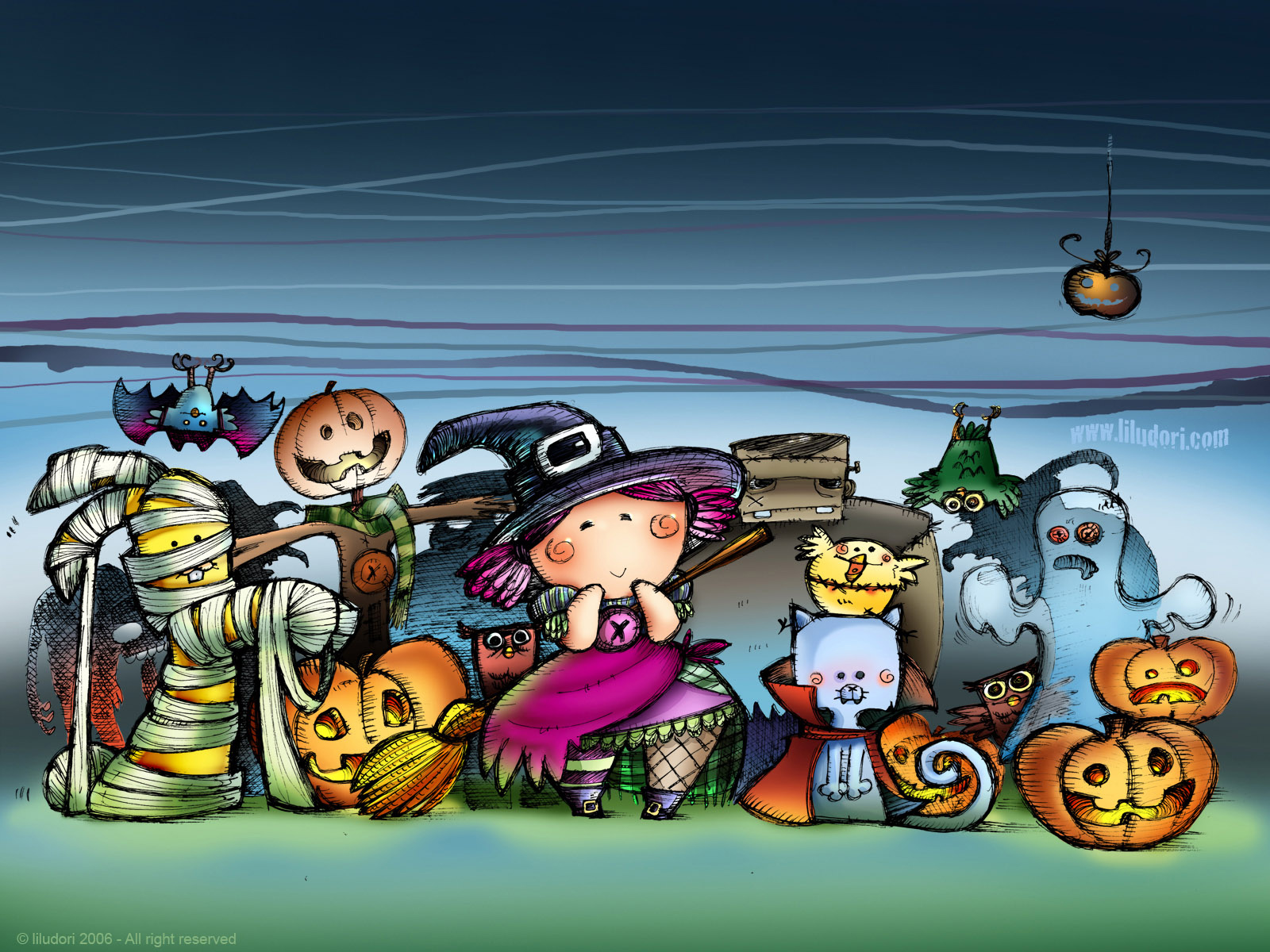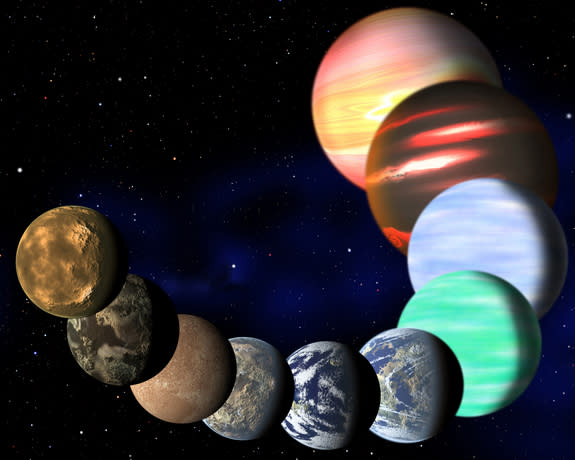10. ประตูนรก (Hell's Door)
ประตูนรก แห่งเติร์กเมนิสถาน เป็นหนึ่งในสถานที่ที่รวมไว้ทั้งความแปลกและความน่ากลัว จากสภาพหลุมขนาดยักษ์ ลึกกว่า 70 เมตร ที่มีเปลวเพลิงลุกท่วมตลอดเวลา จนดูราวกับประตูสู่ขุมนรกที่ร้อนระอุ สำหรับประตูนรกแห่งนี้เดิมทีเป็นเหมืองร้างซึ่งมีหลุมขนาดใหญ่ที่มีก๊าซพวยพุ่งออกมา ใน ค.ศ. 1971 คนงานของเหมืองรายหนึ่งจึงตัดสินใจจุดไฟเผาไหม้ก๊าซในหลุม โดยหวังว่าเมื่อก๊าซถูกเผาจนหมด เปลวไฟนั้นจะมอดดับไปเอง โดยที่เขาไม่ทราบเลยว่าแม้เวลาจะผ่านล่วงเลยมานานหลายปี เปลวไฟที่ลุกท่วมหลุมประตูนรกนี้จะยังคงลุกโชนไม่รู้ดับต่อไป
9. ทะเลสาบโมโน (Mono Lake)
ทะเลสาบโมโน แห่งรัฐแคลิฟลอเนีย สหรัฐอเมริกาเป็นทะเลสาบที่ไม่มีทางออกสู่มหาสมุทร ทำให้น้ำในทะเลสาบมีความเค็มอยู่มาก ซึ่งปริมาณเกลือในทะเลสาบแห่งนี้เองที่ก่อให้เกิดสภาพแวดล้อมที่เหมาะสมแก่การเจริญเติบโตของบรรดากุ้ง ในทุก ๆ ฤดูจึงมักจะมีฝูงนกนับพันตัวบินถลาลงมาหากุ้งกินเป็นอาหาร และด้วยความสวยงามของธรรมชาติที่ผสานกับระบบนิเวศเล็ก ๆ นี้เองที่ทำให้ทะเลสาบแห่งนี้ได้ถูกจัดให้อยู่ในทำเนียบสถานที่สุดแปลกของโลก
8. ซาลาร์ เดอ ยูยูนิ (Salar de Uyuni)
ซาลาร์ เดอ ยูยูนิ เป็นทะเลเกลือที่ใหญ่ที่สุดในโลก ด้วยพื้นที่ถึง 10,582 ตารางกิโลเมตร ตั้งอยู่ทางตะวันตกเฉียงใต้ของโบลิเวีย ใกล้ยอดของเทือกเขาแอนดีส ซึ่งชั้นเกลือของสถานที่แห่งนี้เป็นคราบเกลือที่หลงเหลือมาจากยุคก่อนประวัติศาสตร์ ที่มีความหนาเป็นเมตร ทำให้ชั้นเกลือเหล่านี้สามารถรองรับน้ำหนักของรถที่แล่นผ่านทะเลเกลือแห่งนี้ได้โดยไม่แตก และนักท่องเที่ยวก็สามารถเดินไปบนชั้นเกลือเหล่านี้เพื่อชื่นชมกับทัศนียภาพสุดอัศจรรย์ของมันได้
7. ภูเขาช็อกโกแลต (Chocolate Hills)
สำหรับสถานที่สุดแปลกบนโลกของเราอีกที่หนึ่งคงจะหนีไม่พ้น ภูเขาช็อกโกแลต แห่งเกาะโบโฮล สถานที่ท่องเที่ยวอันโด่งดังของประเทศฟิลิปปินส์ ซึ่งภูเขานับ 1,268 ลูกที่เรียงรายอยู่นั้นมีลักษณะเป็นรูปทรงกรวยคว่ำเหมือนกัน ทั้งยังมีขนาดที่ใกล้เคียงกันในช่วงความสูงตั้งแต่ 30-50 เมตร อย่างไรก็ดีสำหรับชื่อภูเขาช็อกโกแลตของสถานที่แห่งนี้ มีที่มาจากสภาพของต้นหญ้าสีเขียวที่ขึ้นคลุมภูเขาแต่ละลูกจะเปลี่ยนเป็นสีน้ำตาลในฤดูแล้ง
6. น้ำพุร้อนสีเลือด (Blood Pond)
ด้วยความงดงามจากการสรรค์สร้างของธรรมชาติที่มีความแปลกไม่เหมือนใครนี้เองที่ทำให้ น้ำพุร้อนสีเลือด หรือ นรกขุมที่เก้าแห่งเบปปุแห่งนี้กลายมาเป็นน้ำพุร้อนที่โด่งดังที่สุดของเมืองเบปปุ จังหวัดโออิตะ บนเกาะคิวชูของญี่ปุ่น ซึ่งสีแดงราวกับเลือดของน้ำพุร้อนแห่งนี้เกิดจากน้ำที่อุดมไปด้วยธาตุเหล็กที่สูงมากนั่นเอง อย่างไรก็ตามเนื่องจากน้ำมีธาตุเหล็กผสมอยู่มากทำให้น้ำพุร้อนแห่งนี้ไม่เหมาะแก่การลงแช่ หรือใช้อาบน้ำ มันจึงถูกใช้เป็นสถานที่ชมวิวไปนั่นเอง
5. ภูเขาโรไรม่า (Mount Roraima)
ภูเขาโรไรม่า ตั้งอยู่ในเมืองไรโรม่าของประเทศบราซิล ในอเมริกาใต้ บนพรมแดนที่เชื่อมต่อระหว่าง 3 ประเทศ คือ เวเนซูเอลา บราซิล และกายอานา ซึ่งสิ่งที่ทำให้ภูเขาโรไรม่าได้กลายเป็นสถานที่สุดแปลกของโลกก็คือลักษณะของยอดเขาที่แบนเรียบเหมือนกับพื้นโต๊ะ ราวกับธรรมชาติจับปั้น ล้อมรอบด้วยผาแนวดิ่งสูง 400 เมตร
4. แม่น้ำสีแดง (Rio Tinto River)
แม่น้ำสีแดง ตั้งอยู่ทางตะวันตกเฉียงใต้ของประเทศสเปน มีต้นน้ำไหลมาจากภูเขาเซียร์ร่า โมรีน่า โดยสำหรับสีแดงอันเป็นเอกลักษณ์ของมันนั้นเกิดขึ้นจากแร่โลหะชนิดต่าง ๆ ที่อยู่รอบแม่น้ำสายนี้ ไม่ว่าจะเป็นแร่ทองแดง แร่เหล็ก แร่โลหะ และแร่อื่น ๆ ซึ่งทำให้น้ำในแม่น้ำมีความเป็นกรดสูงมากจนเปลี่ยนเป็นสีแดง เกิดเป็นสถานที่สุดแปลกพิลึกและได้กลายมาเป็นแหล่งท่องเที่ยวภายในประเทศสเปนในที่สุด
3. พามุกคาเล (Pamukkale)
พามุกคาเล เป็นระเบียงบ่อน้ำพุร้อนที่แสนจะงดงามแห่งประเทศตุรกี ซึ่งเกิดขึ้นเนื่องจากการเกิดแผ่นดินไหวของโลกในอดีต โดยความงดงามสุดวิจิตรของสถานที่แห่งนี้ก็เกิดขึ้นจากบ่อน้ำร้อนที่อุดมไปด้วยแคลเซียมคาร์บอเนต ซึ่งเมื่อน้ำพุร้อนระเหยขึ้นมาเป็นเวลาเนิ่นนาน ไอน้ำก็ทำให้ค่อย ๆ ก่อให้เกิดชั้นของแคลเซียมเกาะบริเวณขอบบ่อจนเกิดเป็นผนังสีขาวขึ้นนั่นเอง
2. บ่อน้ำพุร้อนแกรนด์พรีสเมติก (Grand Prismatic Spring)
บ่อน้ำพุร้อนแกรนด์พรีสเมติก เป็นบ่อน้ำพุร้อนที่ใหญ่เป็นอันดับที่ 3 ของโลก ตั้งอยู่ในอุทยานแห่งชาติเยลโลว์สโตน สหรัฐอเมริกา ซึ่งสีสันที่แบ่งเฉดเป็นสีน้ำเงินตรงกลางบ่อและสีส้มที่ขอบบ่อนี้เองที่ทำให้สถานที่แห่งนี้งดงามราวกับอยู่ในเทพนิยาย จนไม่คิดว่าจะมีอยู่บนโลกนี้ โดยนักวิทยาศาสตร์ได้อธิบายถึงการแบ่งเฉดสีของบ่อน้ำพุร้อนแห่งนี้ว่า ขอบบ่อที่เป็นสีส้มนั้นเกิดขึ้นจากแบคทีเรียที่เจริญเติบโตอย่างหนาแน่นบริเวณขอบบ่อ เนื่องจากภายในบ่อนั้นอุดมไปด้วยแร่ธาตุและมีอุณหภูมิที่เหมาะสมนั่นเอง
1. เกาะโซโคตร้า (Socotra Island)
เกาะโซโคตร้า เป็นเกาะที่มีขนาดใหญ่ที่สุดในบรรดาเกาะทั้ง 4 ของประเทศเยเมน ในมหาสมุทรอินเดีย เกาะแห่งนี้เป็นเกาะที่แสนสงบและมีภูมิประเทศ ภูมิอากาศเฉพาะตัว ทำให้เหมาะแก่การเติบโตของพืชสายพันธุ์แปลก ๆ ที่หาชมไม่ได้ที่ไหน เพราะมีรูปร่างหน้าตาแปลกประหลาดกว่าพืชชนิดอื่นบนโลก ซึ่งต้นไม้บางต้นคงอยู่บนเกาะนี้มานานกว่า 20 ล้านปีแล้ว จากความงดงามและความแปลกประหลาดของพืชพรรณชนิดต่าง ๆ เหล่านี้เองที่ทำให้เกาะแห่งนี้ดูราวกับเป็นสถานที่บนดาวดวงอื่น และเกาะโซโคตร้าแห่งนี้ก็ได้รับการขึ้นทะเบียนเป็นมรดกโลกโดยองค์การยูเนสโกแล้ว เมื่อเดือนกรกฎาคม ค.ศ. 2008





